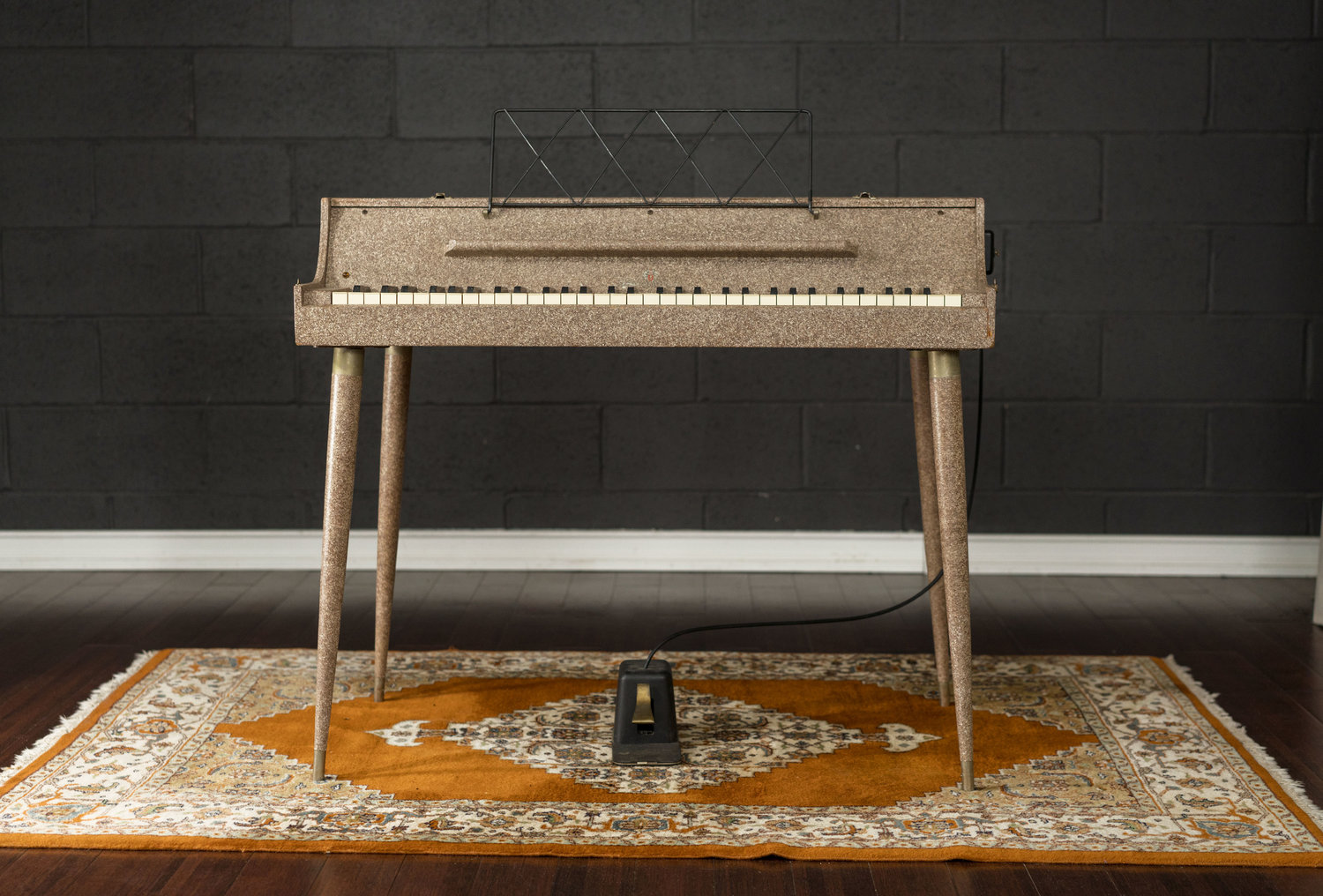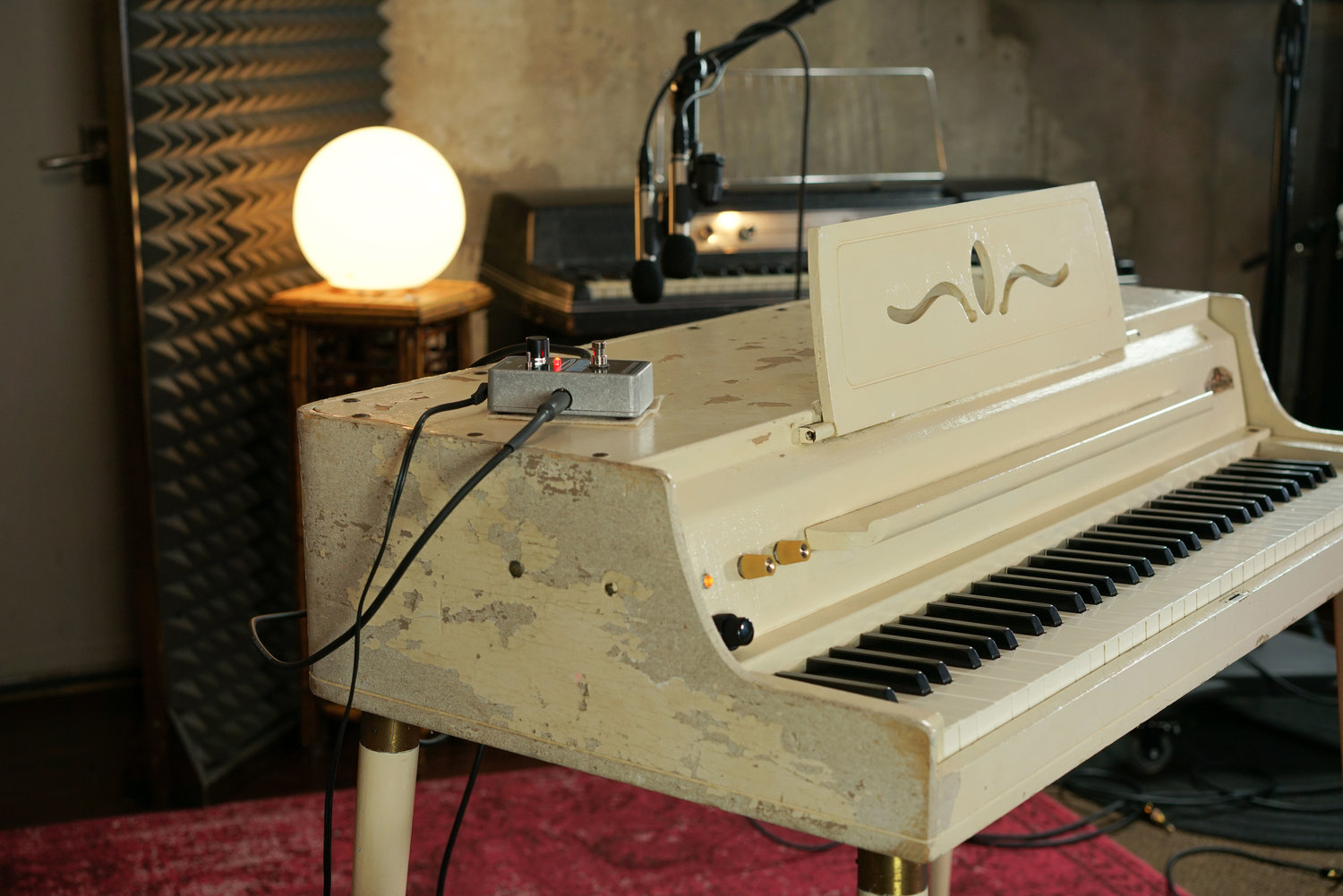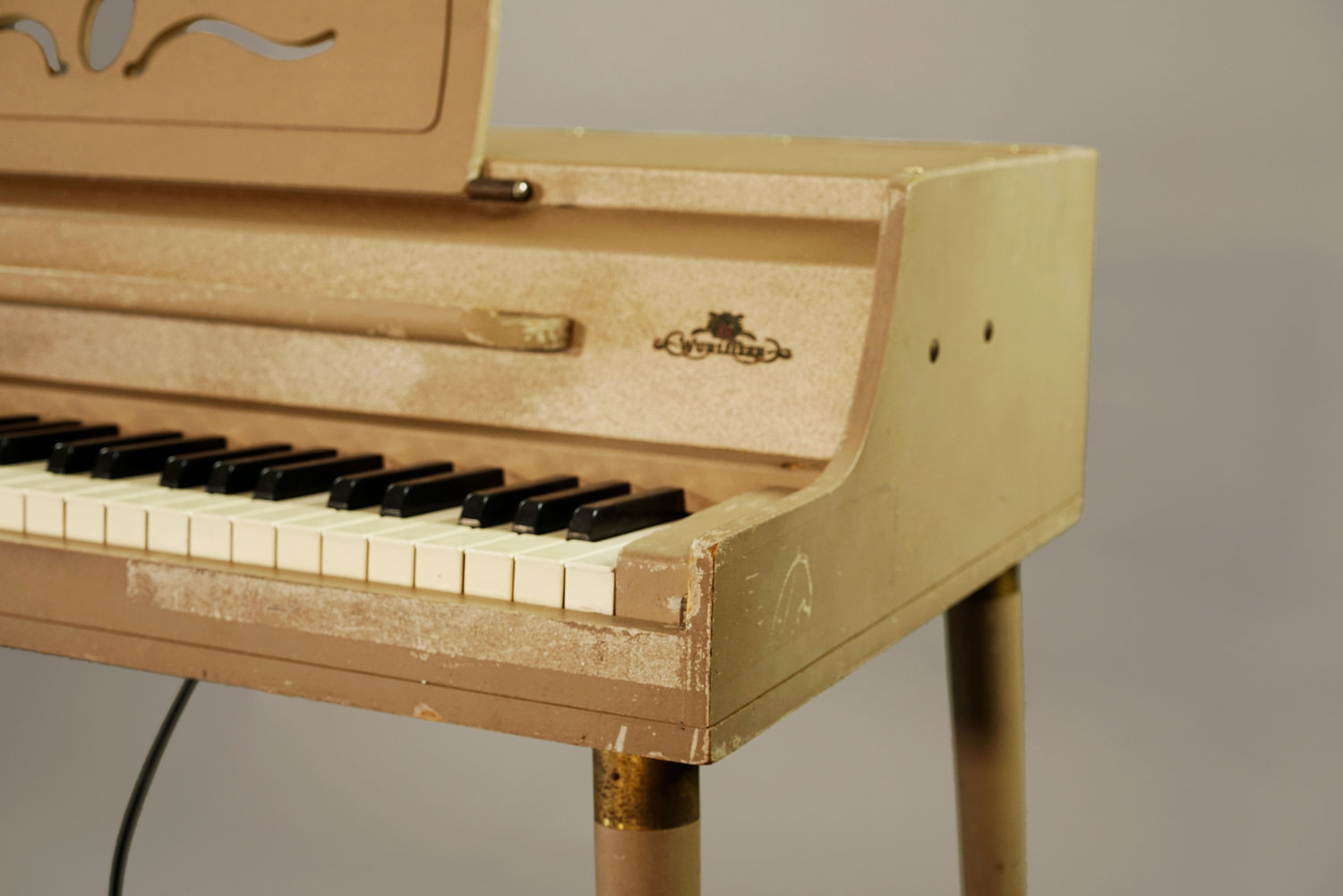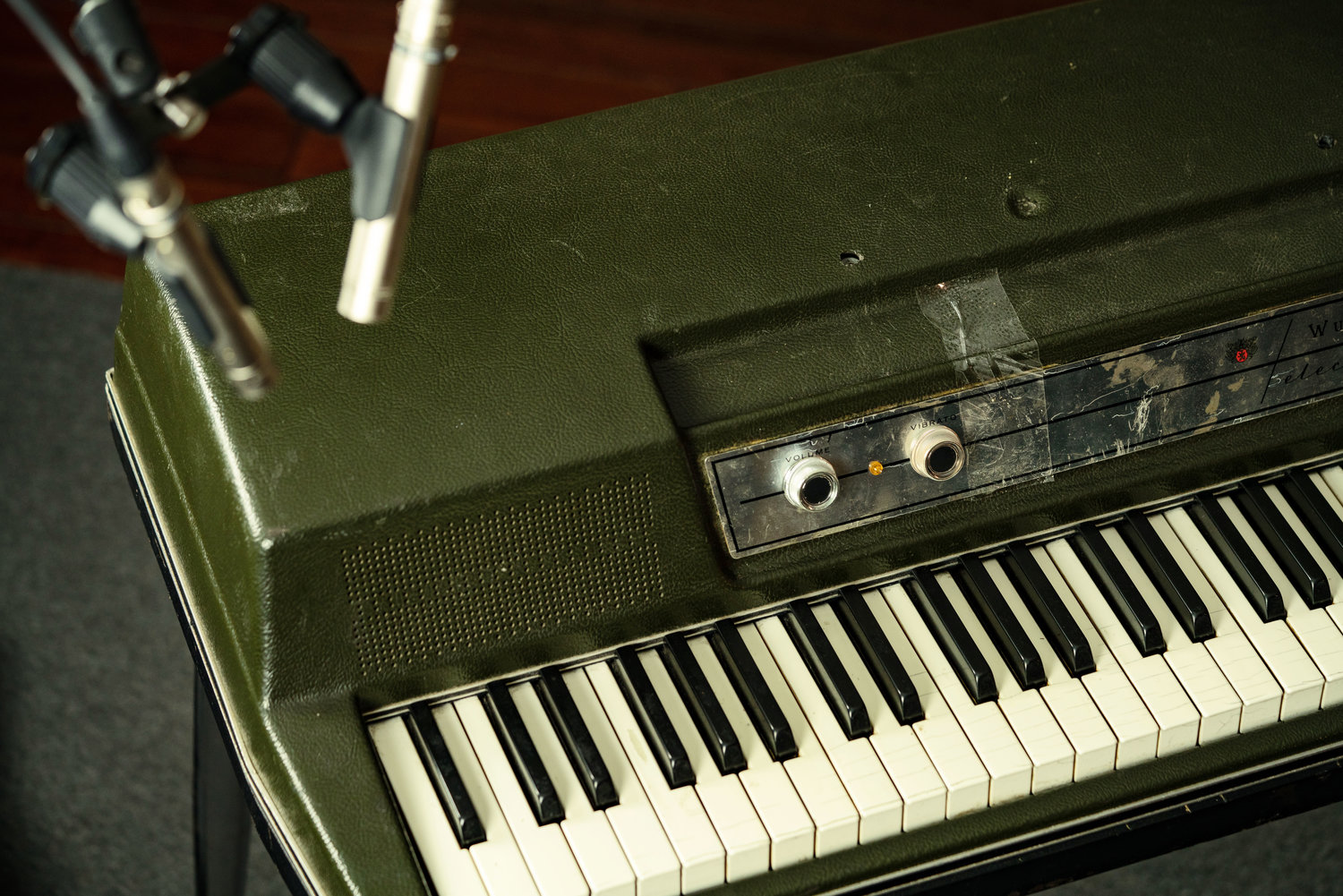What pedals should you put in your Wurlitzer's effects loop?
This Wurlitzer 112 has been modified for an fx loop, so pedals such as this reverb pedal can be used.
An effects loop opens up many, many tonal possibilities in your Wurlitzer. Some of the earlier Wurlitzers have a reputation as a one-trick pony. The 112, for instance. How many people on forums have opined that it’s good for that one Ray Charles sound, and that’s it? Three people? Four? That’s not the point. The point is that, once you give the 112 an fx loop, it now has an unlimited amount of sounds.
But what sounds, specifically, should you plug into your Wurlitzer’s effects loop?
Here’s the short answer: All of them.
The Long Answer
Time-based effects. This includes delay, phaser, flanger, reverb, etc. Let’s spotlight reverb for a moment. Reverb in a Wurlitzer sounds amazing. Light reverb has all the obvious benefits, while a very wet reverb gives the Wurlitzer a quality of vintage distance, as if its tone was bouncing between 1963 and the present day. Delay and more unusual time-based effects can give the Wurlitzer’s sound a synthy abstraction.
Modulation effects. This includes tremolo, wah, volume, chorus (and phaser and flanger, depending on who you ask). We already know that tremolo sounds great in a Wurlitzer, but an fx loop can allow you to use alternative styles of tremolo, such as harmonic tremolo or a pedal with more elaborate tremolo effects. And, of course, other modulation effects like wah open up infinite tonal possibilities.
Distortion effects. This includes overdrive and fuzz pedals. Contrary to popular belief, you can insert overdrive and fuzz into a loop. This opens up various dirty and crunchy tones that will have you considering that classic Wurlitzer sound in a whole new way.
FAQ
Q: What’s so special about an onboard effects loop?
A: It’s easy to plug pedals into a guitar amp: just grab an extra cable and hook them up between your guitar jack and the amp’s input. But pedals can’t be placed at the input of a Wurlitzer, because its electrostatic pickup requires 180v at the input. Instead, pedals must be introduced somewhere within the amplifier.
Our 145 replacement amp optionally comes with an fx loop.
Some people connect pedals between the Wurlitzer’s aux out and an external amplifier, but this isn’t the best solution. First, you’ll only hear the effect through the amp, not the Wurlitzer’s speakers. But, more importantly, not all Wurlitzers have an aux out - or, worse, the aux is situated at the end of the signal chain, near the speaker out. Once the signal has gone through the power tubes, it’s optimized to drive a speaker, which is overkill as far as a pedal is concerned. (You’ll mostly see this aux placement as a DIY mod to the amplifier.)
Our effects loops are designed to present pedals with the low-impedance signal they like to see. Its placement in the preamp offers a signal that is buffered but not excessively strong, which is particularly optimal for time-based effects like reverb and delay. Finally, because the loop is fully onboard, the effect signal will be heard through the Wurlitzer’s speaker.
(Bonus suggestion! If you like using an aux out to send your Wurlitzer’s signal to an external amplifier or recording console, you can use the fx loop to route the signal back into the Wurlitzer. Just use a DI or other device with a “thru” connection. That way, you can use an external amplifier and also monitor the effected signal via your Wurlitzer’s onboard speakers.)
But wait, there’s more! All amps, regardless of whether they send 180v to the input, can benefit from an fx loop. Time-based effects like delay do particularly well in the loop, because in this position the signal they affect already has all of the coloring of the preamp, including any distortion. Delaying a distorted signal (that is, when delay is placed in the loop of an amp that generates preamp distortion) results in a clearer tone than distorting a delayed signal (i.e., when delay is positioned in front of the amp). Because the fx loop Wurlitzer has more gain than the original, the preamp can generate significant distortion, so this should definitely be taken into consideration.
Modulation effects also have more clarity when placed into the loop. Distortion effects are traditionally placed in front of an amp, but some musicians do choose to insert them into the loop for a harsher, more intense distortion sound. Likewise, a boost pedal placed at the end of an fx chain will result in a clean volume boost without excessively coloring the preamp signal.
We installed a replacement amplifier in this Wurlitzer 145. Reverb was one of our favorite effects to put in the loop.
What’s the best way to plug a pedal into the loop? Not sure how a particular pedal will behave in the loop? First, turn down all the volumes, including the main volume on your Wurlitzer, the send volume, and the master volume (if applicable). If the pedal has a volume control, turn that down as well. If you have an idea of how the pedal will behave in the loop, feel free to only turn the send level down. However, turning down all volumes will ensure that the pedal doesn’t cause any unexpectedly loud sounds to come through, which can potentially stress your vintage speaker.
Next, plug in the return cable, followed by the send.
if you’re like us, you just spent 15 minutes searching for your good pair of short cables. If you’re really like us, you can’t find it, and end up with cables so long you can set the pedal up in a different time zone. You also have this weird habit of plugging in your cables in slow motion, as if completing a ritual. By the time you’re done with all that, you’ve completely forgotten that you turned down every volume, you’re wondering why you’re not getting any sound and did this pedal just break the Wurlitzer after all??
Don’t be like us. Remember that all your volumes are on zero, and slowly move them up to a practical position. Then, enjoy the pedal!
Are there any pedals I should avoid plugging into the loop? Pedals of all kinds can be plugged into the loop. Feel free to experiment with unusual sounds and different effects.
You may have heard that gain-based effects cannot be plugged into an effects loop. That’s not true: effects like fuzz and overdrive can play nice through a loop, and it’s worthwhile to experiment. However, a pedal in the loop will see a stronger signal than a pedal placed in front of an amp. If the pedal manufacturer recommends a front-of-amp placement, be cautious about placing it in the loop. Otherwise, it should be fine. If in doubt, turn the keyboard’s volume and fx level send to zero. After plugging in the pedal, slowly increase both controls.
Further Reading
Browse all of our articles on restoring vintage gear. Or, click on an image below.







